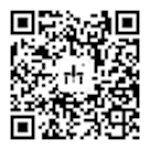
Frequently Asked Questions
After-sales knowledge aims to provide answers to potential questions regarding maintenance and repair, and we hope this is helpful to you.
Common Problems of Coordinate Measuring Machines
Probe Knowledge
Common Problems of Probe Holders
Machine Maintenance
-
Q 1The correct way to select a three-coordinate measuring probeA
High-precision measurement: The scanning probe measures discrete points at a constant speed or with a constant force, which can achieve higher measurement accuracy. As the scanning probe can directly determine the normal vector of the contact point, it has advantages in situations where strict positioning and orientation measurements are required for discrete points. In the case of scanning unknown surfaces, also known as digitization, the scanning probe demonstrates its unique advantages: during digitization, a large number of points are needed, and the point sampling method of the trigger probe is too slow. Since the surface is unknown, the control method of the measuring machine's movement is also different, that is, it works in the "exploration mode": the measuring machine calculates the next movement trajectory and the point sampling density based on the already moved trajectory. Several considerations for choosing a three-coordinate probe: 1. When contact probes can be applied, choose non-contact probes with caution. 2. When only dimensions and positional elements are measured, prefer contact trigger probes. 3. If the cost is considered and requirements are met, choose contact trigger probes. 4. For parts with high requirements for shape and contour accuracy, use scanning probes. 5. Scanning probes should be capable of measuring discrete points. 6. Consider the interchangeability of scanning probes and trigger probes (usually achieved through universal probe holders). 7. For parts that are prone to deformation, have low precision requirements, or require an extremely large amount of data, non-contact probes can be considered. 8. Take into account the compatibility of software and additional hardware (such as probe controllers and cables).
-
Q 2Advantages and disadvantages of trigger probes:A
Advantages: 1. Suitable for measuring spatial prismatic objects and known surfaces; 2. Strong versatility; 3. Various types of trigger probes and accessories are available for use; 4. Low procurement and operating costs; 5. Simple application; 6. Suitable for dimensional measurement and online applications; 7. Rugged and durable; 8. Compact size, easy to use in narrow spaces; 9. Since the measuring machine operates at a constant low speed in a straight line during point measurement, the dynamic performance of the measuring machine has minimal impact on measurement accuracy. Disadvantages: Low measurement point acquisition rate.
-
Q 3Advantages and Disadvantages of Scanning ProbesA
Advantages: 1. Suitable for shape and contour measurement; 2. High point acquisition rate; 3. High-density point acquisition ensures good repeatability and reproducibility (GR&R); 4. Advanced data processing capabilities. Disadvantages: 1. More complex than trigger probes; 2. Slower than trigger probes for discrete point measurement; 3. Significant dynamic errors due to acceleration during high-speed scanning cannot be ignored and must be compensated for; 4. Probe tip wear must be carefully monitored.
-
Q 4When to Use Scanning Probes?A
Scanning probes are used for measuring parts and profiles with shape requirements. The main advantage of scanning measurement is its fast data acquisition speed. The data not only determine the dimensions and position of the part but also accurately describe the shape and contour of multiple points. This is particularly suitable for parts with strict shape and contour requirements, where the shape directly affects performance (e.g., blades, elliptical pistons, etc.). Scanning probes are also applicable when there is uncertainty about whether the machining equipment can produce parts with sufficiently good shapes, and shape errors become a primary concern.
-
Q 5When to Use Trigger Probes?A
1. When the focus is on dimensions (e.g., small threaded bottom holes), spacing, or position, and shape errors are not emphasized (e.g., positioning pin holes); 2. Or when it is certain that the machining equipment can produce parts with sufficiently good shapes, and the focus is primarily on dimensional and positional accuracy. Contact trigger measurement is suitable, especially for discrete point measurement; 3. Trigger probes are faster than scanning probes and are more compact, making them easier to access parts in confined spaces; 4. Generally, trigger probes have lower usage and maintenance costs. In the mechanical industry, there is a large amount of geometric measurement where only the dimensions and position of parts are of concern. Therefore, most measuring machines on the market, especially medium-precision ones, still use contact trigger probes.

